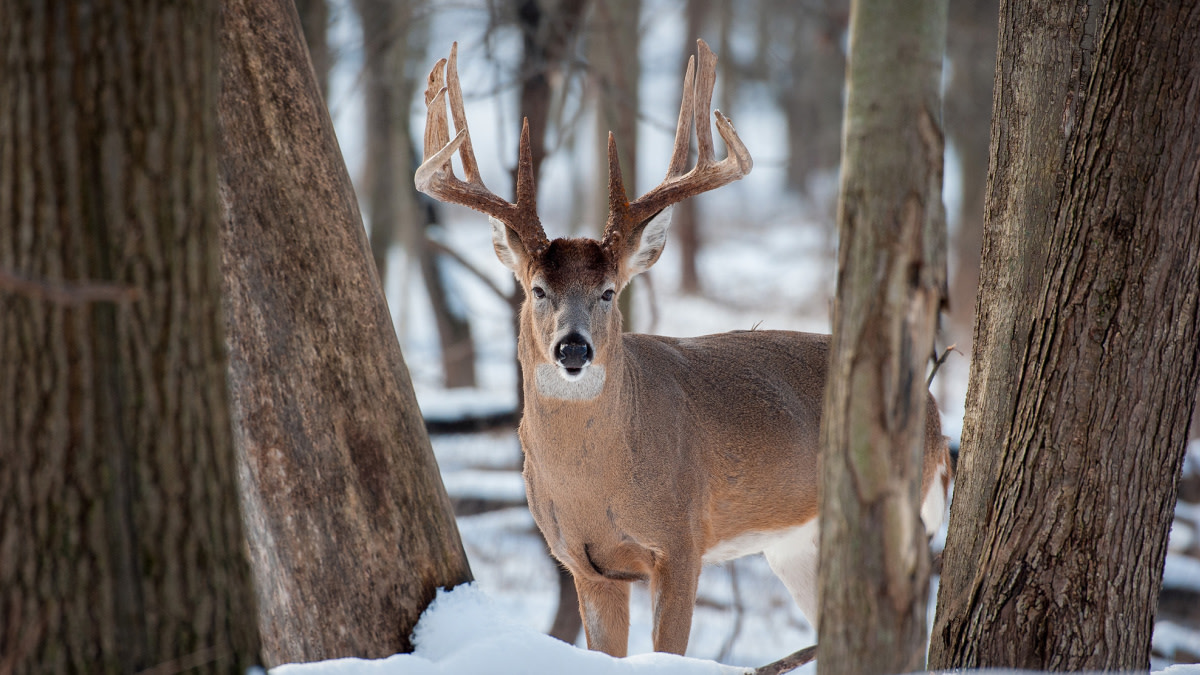
The peak of the whitetail rut is now behind us in most parts of the country. I hate to say that, but it’s true. If you’re still holding on to a buck tag this fact might be causing you some stress, but don’t despair. The post-rut can be just as promising as the peak if you know where to look.
Here are three places to focus your efforts when trying to find a post-rut buck.
The Thickest Cover
By the time the rut reaches its fourth quarter, a large proportion of any given deer population is tired of being harassed.
At this point in the year, many firearm seasons have opened and hunting pressure has peaked or will soon, sending deer in search of anywhere they can get away from humans. Furthermore, does have been harangued by bucks so consistently during the rut that they too are seeking a respite. For all these reasons, thick nasty cover is often the retreat of choice for over-stressed deer—and the perfect place to find a post-rut buck.
Thick tangles of autumn olive, willows, cedars, old clear-cuts, cattail swamps, or something similar can all provide the security cover bucks and does crave to avoid their pursuers.
“I’ll try to cut a track in and around these types of areas or get a picture,” said experienced Michigan bowhunter Andy May. “Then I’ll hunt that area carefully, trying to capitalize on the first or last few minutes of daylight in the thick cover.”
Being right in that cover or along escape routes leading into it is key says May, as heavily pressured bucks likely won’t travel far from these safe spots. “You won’t see many big bucks cruising in pressured scenarios like this. Survival is top priority after 500,000-plus gun hunters have been at it for weeks,” he said.
The Best Food
As the peak of the rut fades into memory, whitetail bucks shift their focus from reproduction to food once again.
“At the conclusion of the biological rut, whitetails go into a brief period of early winter feeding,” Craig and Neil Dougherty wrote in their book “Whitetails: From Ground to Gun.” “Bucks have lost up to 25% of their body weight due to rutting activity. Feeding and resting are now top priorities for deer.”
Once this shift begins, typically at the end of November or early December, almost all deer activity will start to revolve around the highest quality food source in the area. If you can identify what that favored food source is at a given moment, or plan ahead to make that food source available when you want it, you can have confidence in your post-rut chances.
If you plan to hunt near ag fields or food plots of your own design, Scott Manifold of Drury Outdoors recommends something like soybeans or a similar high energy forage: “The best late season post-rut food plot is one loaded with carbohydrates, protein, and fat that is located right at the edge of their bedding so they don’t have to move much at all to get there,” Manifold said.
Not only will these top food sources draw feeding bucks, they can also attract the young does that might spark the last rutting action of the year. Many doe fawns in healthy deer populations will come into estrous a month after adult does, so there is potential for encountering a hot doe and all the rutting action that comes with her all the way into early or mid December.
“I have harvested some late November and early December giants and while they were back on food and spending ample time in the food plot, they also still managed to be with one of the does that got missed or a young one that had just come into heat,” Manifold said.
The Last Sanctuary
Keeping in mind that most deer will be seeking refuge from hunters by late November or December, other locations to consider are sanctuary properties or regions.
A “sanctuary,” as I’ll define it, is any location or property where hunting is not allowed or where, for whatever reason, it typically does not occur. This might be a private property that doesn’t allow anyone access to it, a Boy Scout camp, a public park or refuge, a golf course or other recreational area, or something similar.
Hunting around the edges of this kind of sanctuary can be a simple but solid way to get into post-rut action. These areas will suck in deer during the heavily hunted rut and firearm portions of the season but can begin leaking again as pressure fades. Be nearby, while keeping in mind the aforementioned food and cover focus points, and you’ll be in a great position for success.
Just Be Out There
As important as these specific locations can be, the very most important thing is to just be out there. Anywhere. When the post-rut rolls around, a lot of deer hunters hang up the bow or gun and call it a season, moving on to football or Netflix or whatever at-home comforts seem more appealing than a cold sit in a tree. Don’t fall prey to that temptation.
The rut may be behind us, but your chances to fill a tag are not. Keep at it.
Feature image via Matt Hansen.





